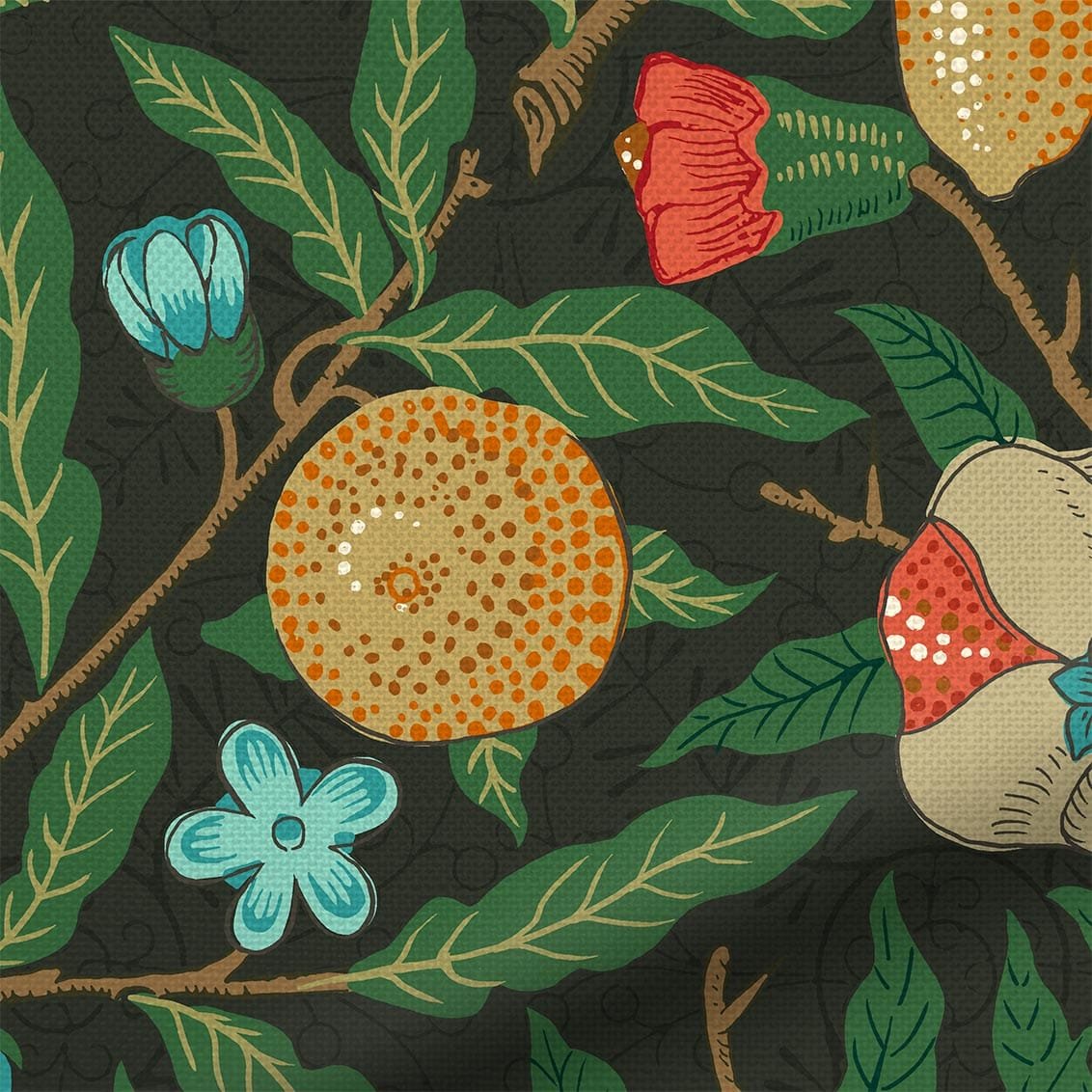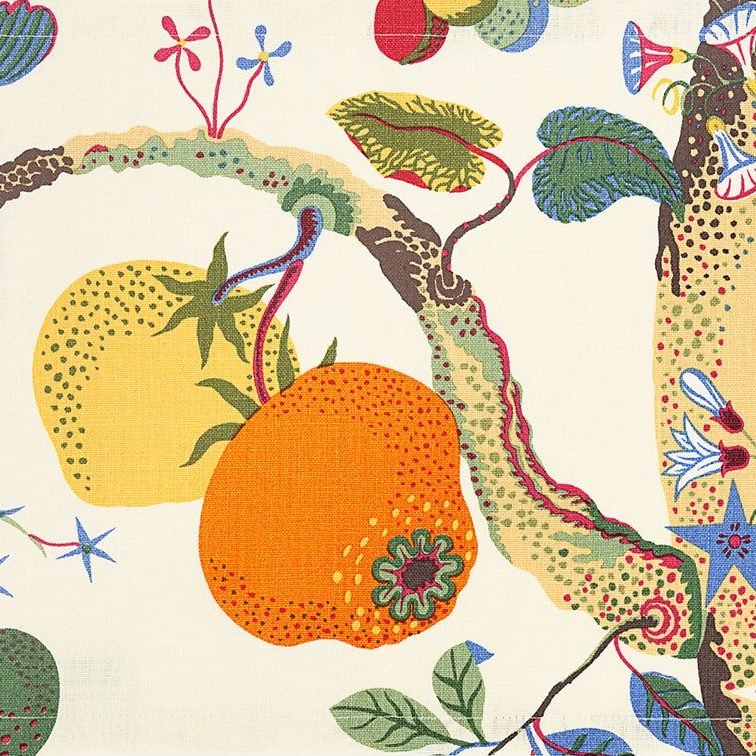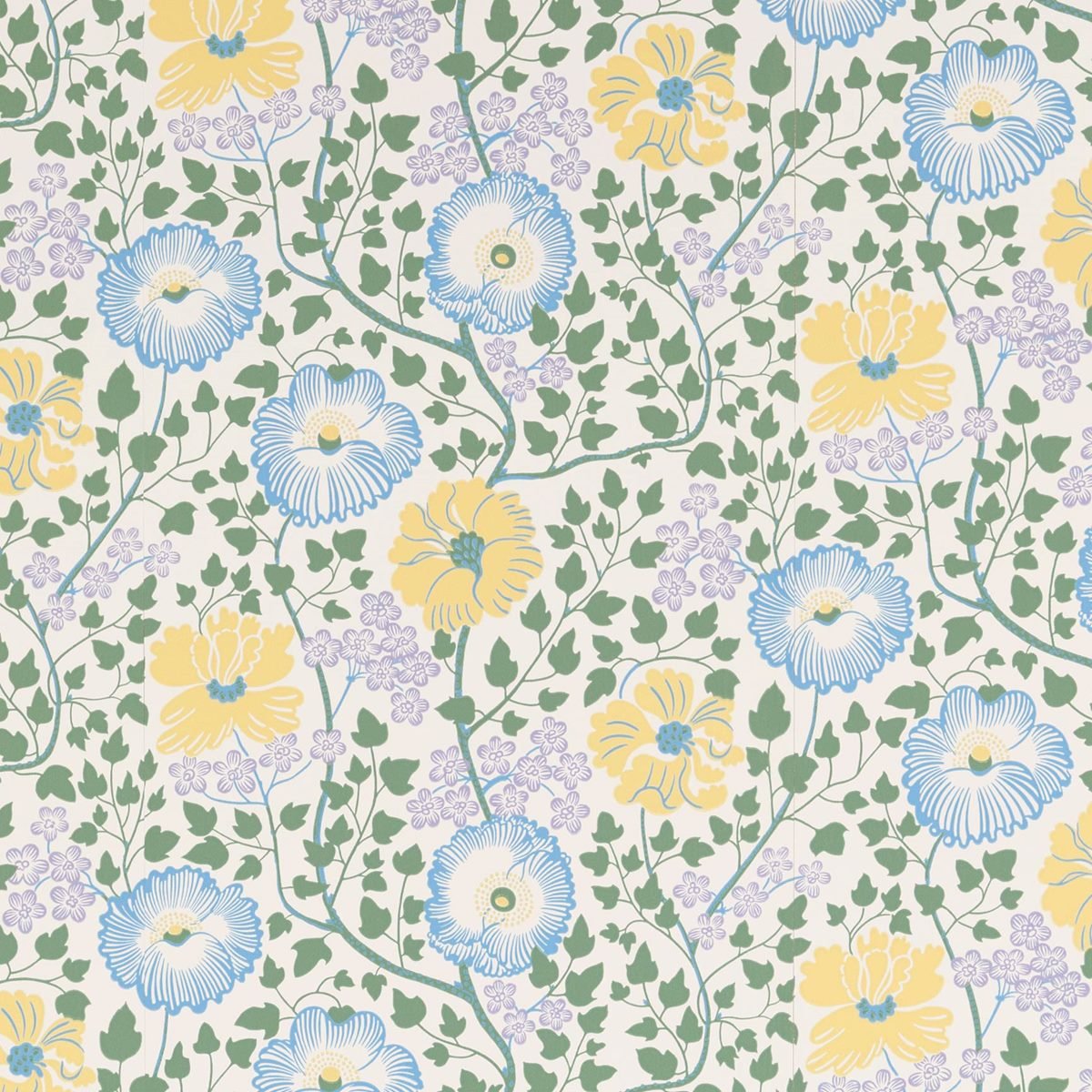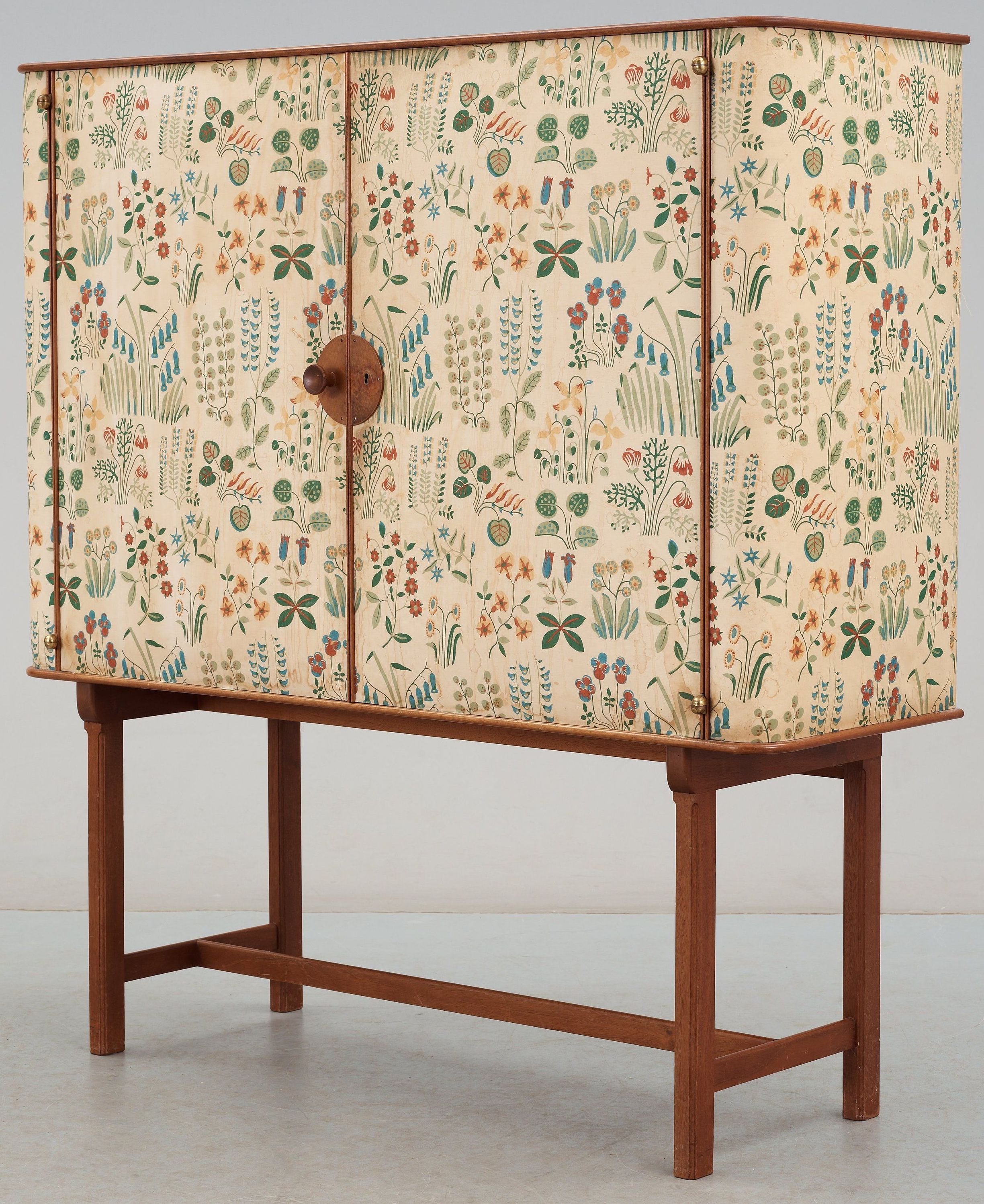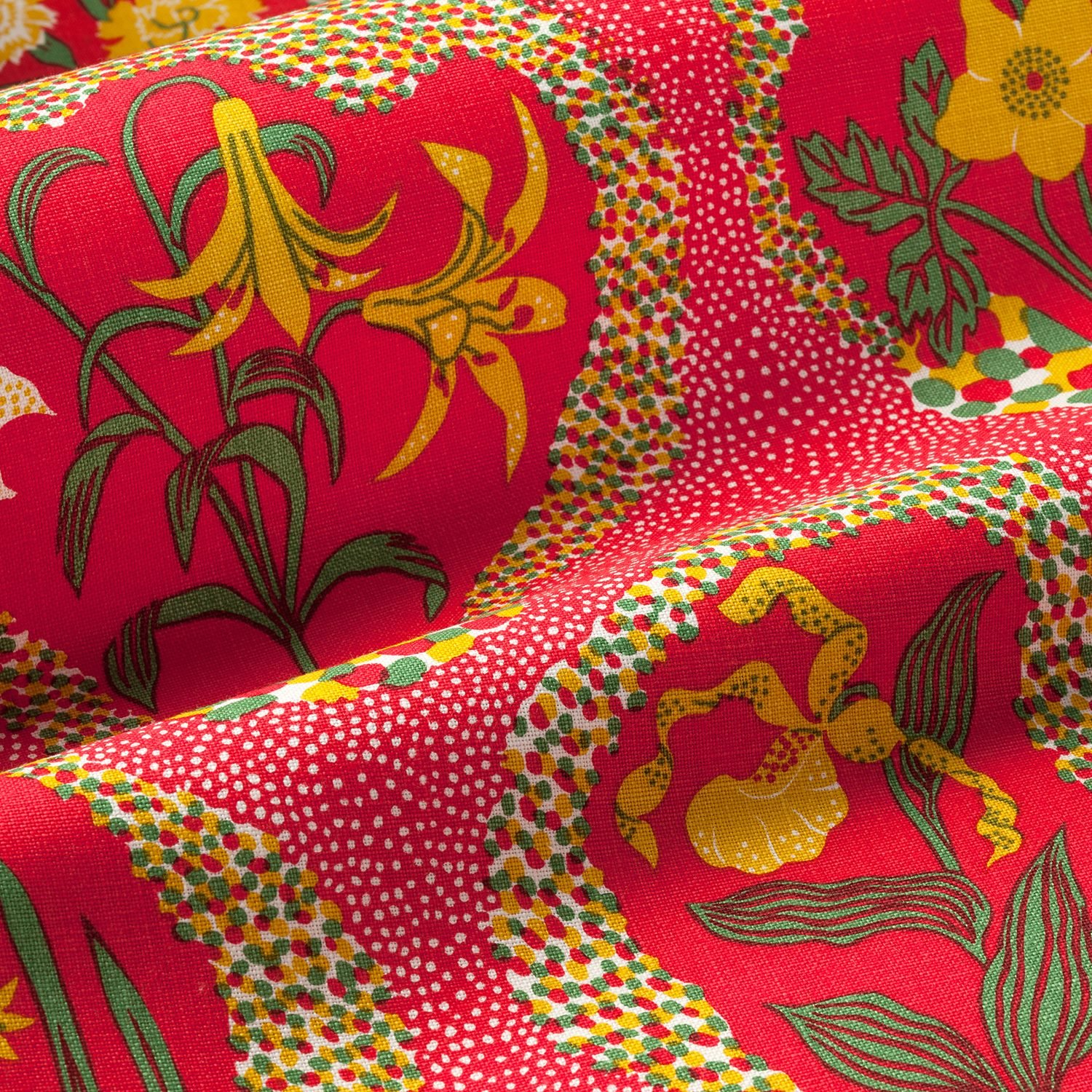JOSEF FRANK
Josef Frank (1885-1967) was an Austrian designer, although his name has since become synonymous with Swedish modern design, as it was here that he became well known for his bright and buoyant botanical textiles for interior design firm Svenskt Tenn.
Mirakel printed linen, designed by Frank in 1920s. Image Svenskt Tenn archives.
Frank was born in Baden, Austria to Jewish parents - his mother a skilled embroiderer and his father the partner of a successful textile factory, so his fascination with fabrics is perhaps unsurprising. After graduating in architecture from Vienna’s Technische Hochschule in 1910, Frank immersed himself in the city’s flourishing field of modernist design and craft. He frequently collaborated with Josef Hoffman, designed several patterns for the Wiener Werkstätte, and was appointed professor of structural design at Vienna’s Kunstgewerbeschule (School of Arts and Crafts).
But what set Josef Frank apart from many of his contemporaries in the design world, was his ardent belief that Modernist interiors should not be cold, austere or formulaic. As design historian Lesley Jackson puts it, “he consciously swam against the tide of the increasingly doctrinaire Modernist age.” Whilst many Modernists during the 1920s and 30s favoured interiors with muted, coordinated fabrics, Frank delighted in mismatching colourful prints to create a relaxing and unpretentious atmosphere. In 1958 (aged 73) he wrote an essay titled ‘Accidentism’ - a term he coined for his vision of a more plural and playful Modernism, in which furnishings old and new could sit happily side by side.
Josef Frank in his apartment in Stockholm, 1956. Image Svenskt Tenn archives.
With his former classmates Oskar Wlach and Walter Sobotka, Frank founded Haus & Garten in 1925, an upmarket design shop offering patterned furniture, rugs and fabrics to the discerning Viennese consumer. He achieved great success with Haus & Garten, but growing Nazi discrimination against Jews in Austria forced him and his wife Anna to seek exile in the relative safety of Stockholm in 1933.
Once settled in Sweden, Estrid Ericson - a longtime admirer of his work - hired Frank to design for her trendy Stockholm design firm Svenskt Tenn. Their shared vision for comfortable, contemporary interiors led to a long and fruitful collaboration, and the firm is often cited as defining the visual language of Scandinavian Modernism, paving the way for brands such as IKEA and Marimekko.
Bambus (bamboo), textile design by Josef Frank for the Wiener Werkstätte, 1920s. Image MAK archives.
Left: Fruit by William Morris, c.1870.
Right: Vegetable Tree printed linen by Josef Frank, 1940s. Image Svenskt Tenn archives.
Frank designed 160 prints for Svenskt Tenn, most of which employ bold botanical motifs - fantastical fruits, voluminous blooms and long stems snaking across the length of the fabric. His colour palette was kaleidoscopic and the repeats impressively inconspicuous. You can see many historical influences in his patterns, from Indian chintzes to William Morris’s dense tapestries; I’ve always thought that the pointillist dots he used to shade fruit and leaves must be a direct nod to William Morris (I’ve selected two images above that show a clear likeness). His cheerful design Tulpaner (below) particularly reminds me of fellow textile designer Paule Marrot’s Les Tulipes - both were designed in the 1940s, although I’m not sure which came first.
His use of botanical motifs lends his fabrics a fresh and timeless feel, and his designs remain bestsellers at Svenkst Tenn year on year. Although Josef Frank liked to theorise deeply about design, his view on pattern design was simple - “the freer the pattern, the better.”
Top left: Sagoträdet, 1940s. Top right: Cabinet designed by Frank for Svenskt Tenn, 1937.
Bottom left: Catleya, 1930s. Bottom right: Tulpaner, 1940s. Images Svenskt Tenn archives.
Josef Frank, c.1960. Image Svenskt Tenn archives.





